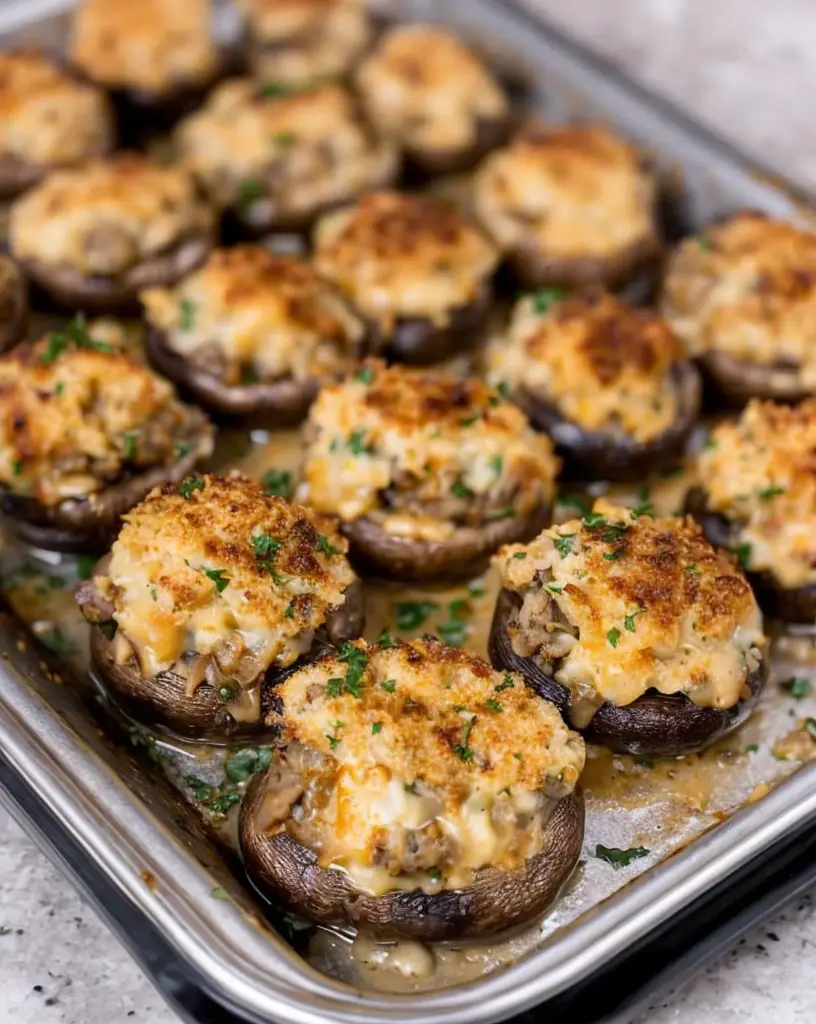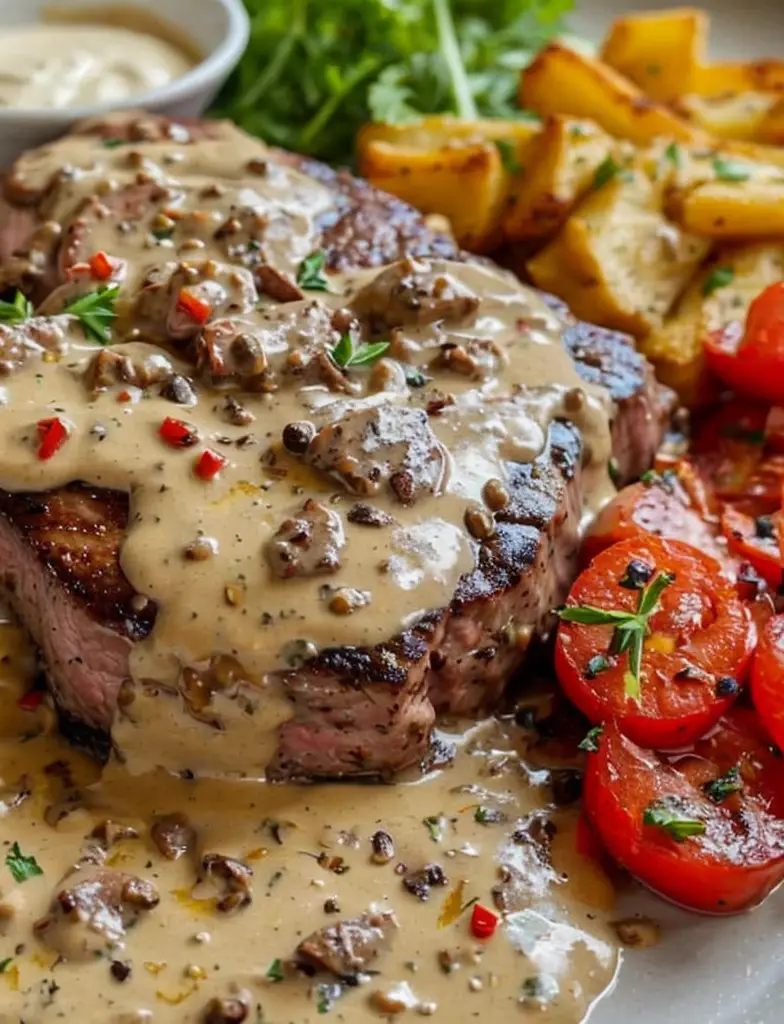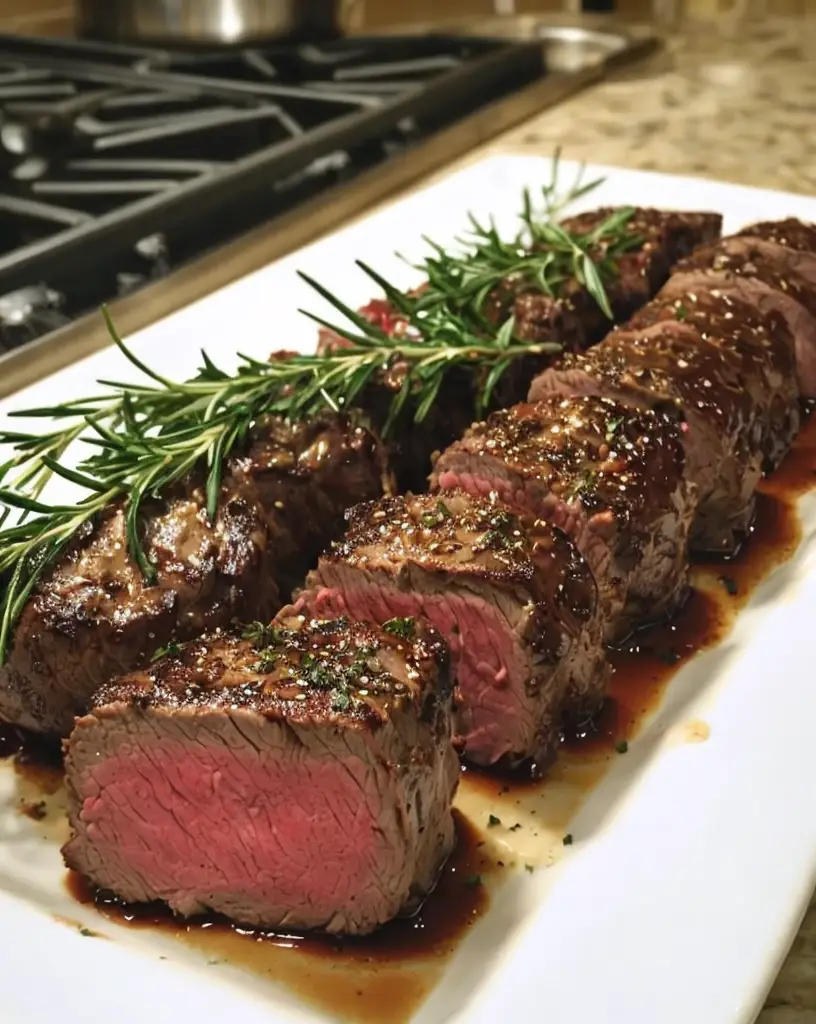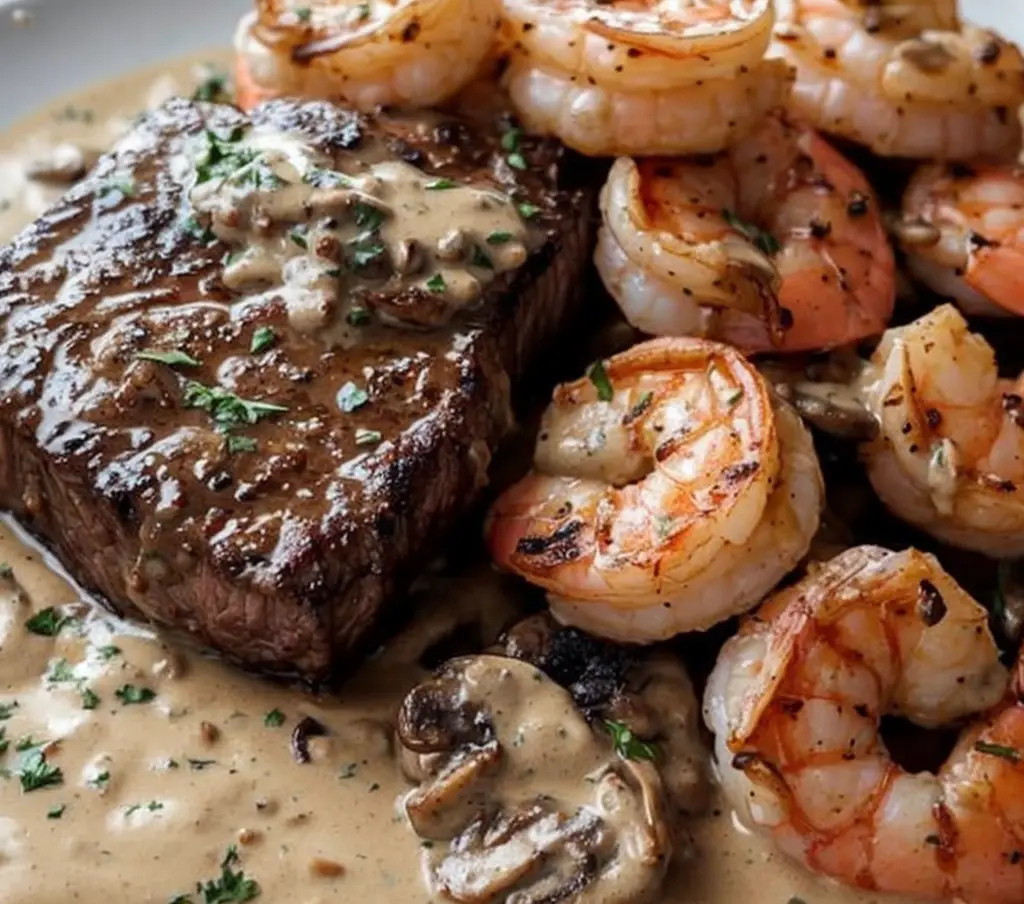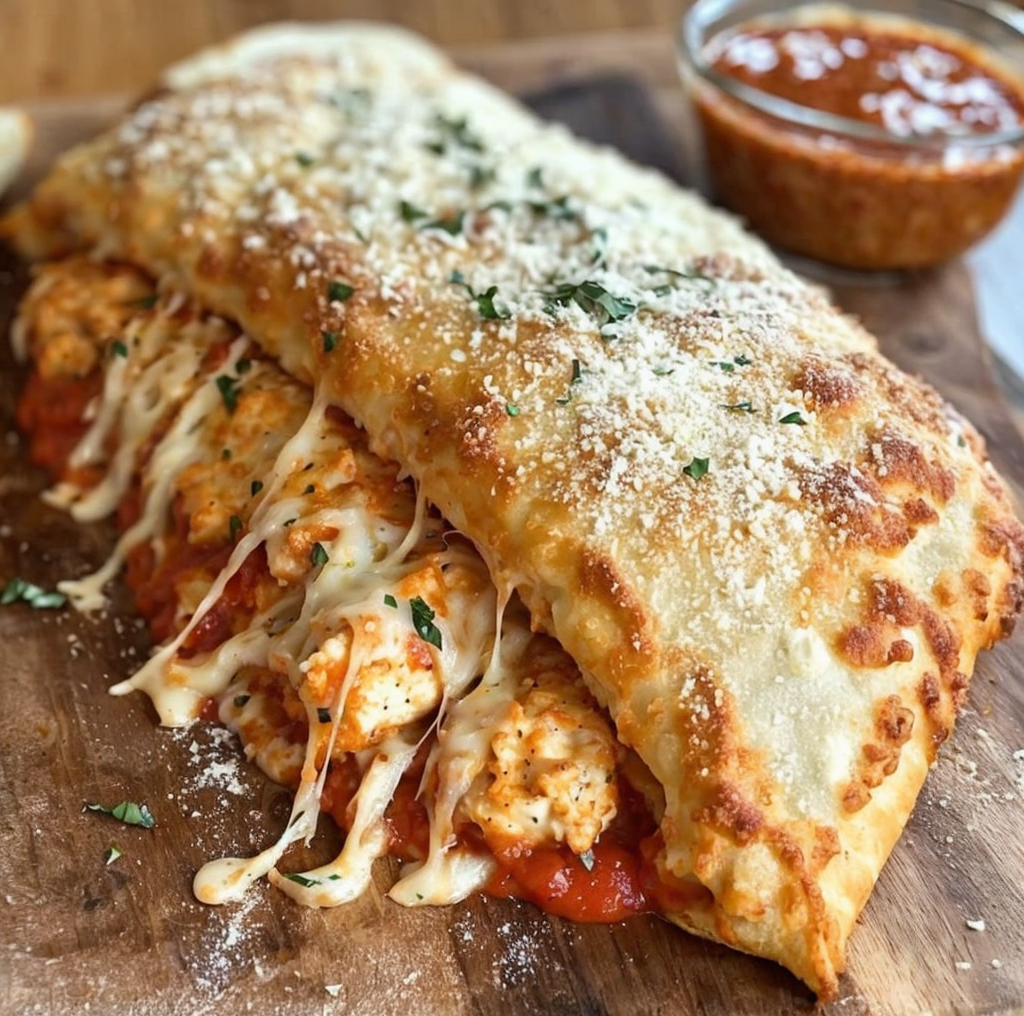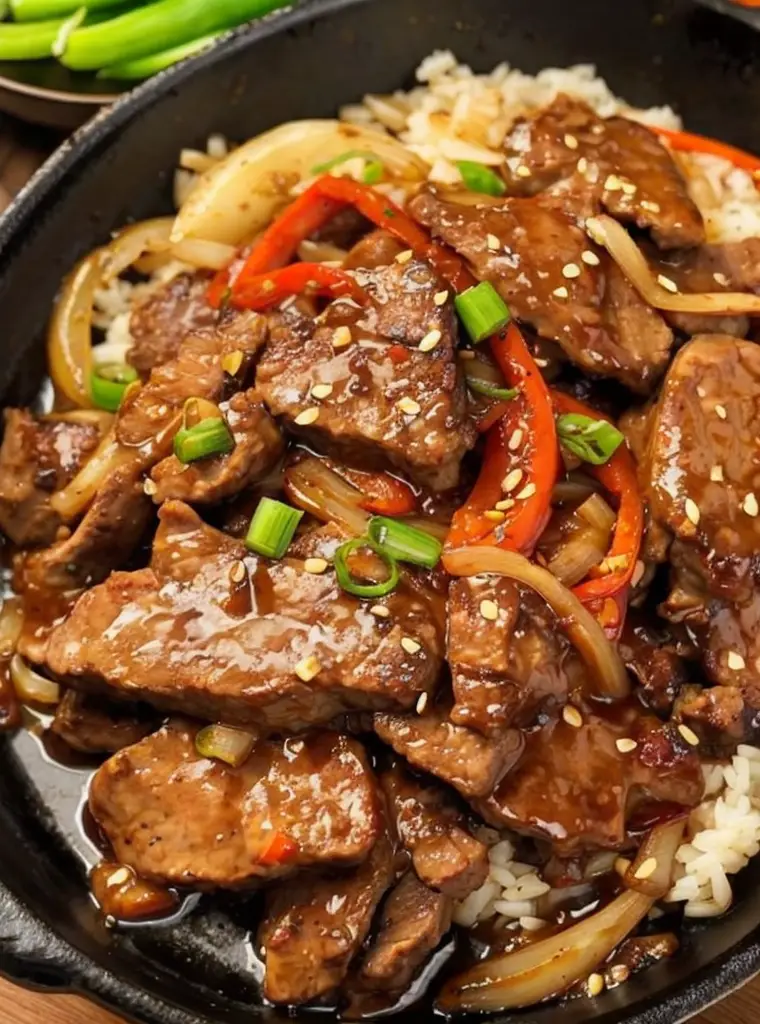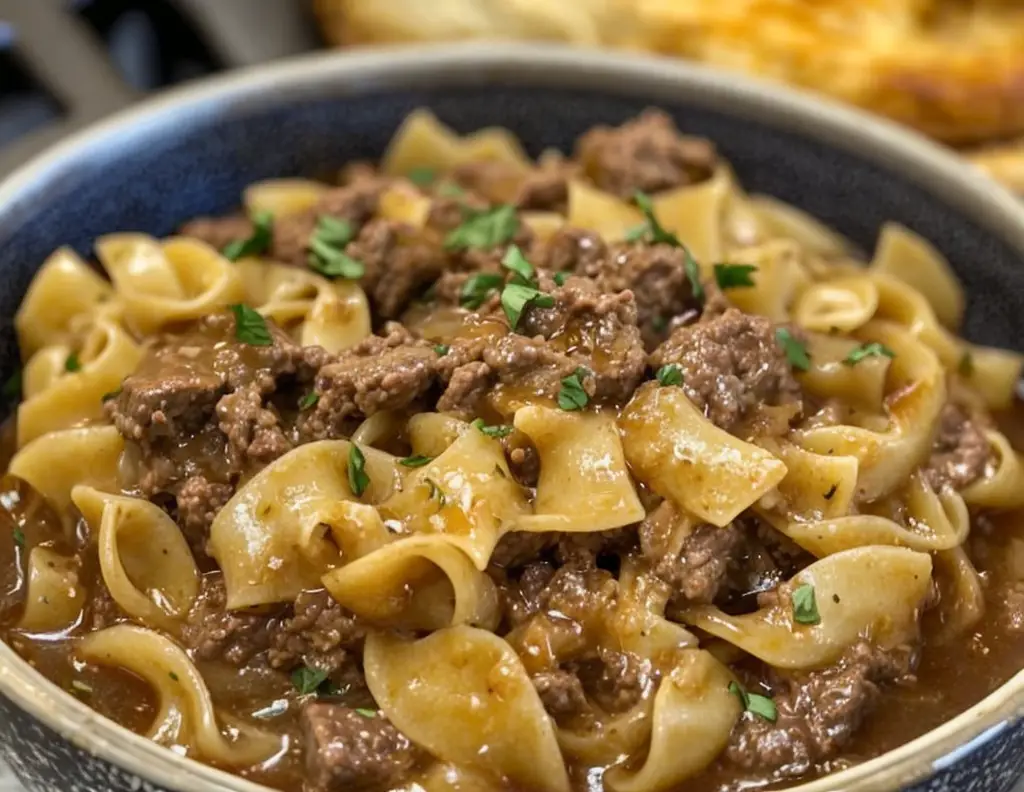Best Ever Stuffed Mushrooms: A Flavorful Delight for All Occasions
There’s something undeniably comforting about the earthy goodness of mushrooms infused with a flavorful stuffing. The Best Ever Stuffed Mushrooms recipe combines a medley of herbs, cheeses, and bread crumbs that elevates the humble mushroom cap into an exquisite appetizer. Perfect for gatherings or simply as a treat for yourself, this dish is easy to prepare and even easier to devour. Whether you’re a novice or a seasoned chef, these stuffed mushrooms are a culinary delight that promises satisfaction.
The preparation process is both enjoyable and rewarding. As you chop, mix, and fill, you’ll appreciate how the diverse ingredients come together to create a perfect harmony of tastes and textures. This recipe is straightforward, making it accessible to cooks at all skill levels. It’s a great way to introduce yourself to the joy of creating sophisticated appetizers without the fuss.
Quick Recipe Highlights
- Flavor Profile: This dish combines the umami-rich taste of mushrooms with savory and aromatic fillings including garlic and herbs.
- Texture: A delightful crunch of breadcrumbs tops these mushrooms, while the interior is creamy and rich, perfectly complementing the tender mushroom cap.
- Aroma: Expect your kitchen to fill with the welcoming scents of sautéed garlic and fresh herbs, creating an inviting atmosphere.
- Visual Appeal: The stuffed mushrooms present a rustic elegance, with golden bread crumbs atop a contrasting mushroom base.
- Skill Level Needed: This recipe is suitable for beginner cooks as it involves simple techniques like sautéing and baking.
- Special Equipment: A baking sheet and mixing bowl are the primary tools you’ll need, making this a low-equipment recipe.
Recipe Overview
- Difficulty Level: The ease of this recipe comes from basic cooking methods such as mixing ingredients and filling caps, suitable for beginners and experts alike.
- Category: Appetizer, Snack
- Cuisine: This recipe reflects Italian influences, known for utilizing fresh, rustic ingredients in harmony.
- Cost: The ingredients are widely available and affordable, making this recipe economically friendly while still delivering gourmet flavor.
- Season: Ideal for fall and winter when mushrooms are plentiful, but delicious year-round.
- Occasion: Perfect for holiday parties, potlucks, or any occasion where you need a crowd-pleasing appetizer.
Why You’ll Love This Recipe
The Best Ever Stuffed Mushrooms offer an outstanding burst of flavors with each bite. The creamy filling, combined with the umami of the mushrooms, ensures a rich taste experience. The crunchy top adds a delightful texture contrast, making each bite utterly satisfying. Whether you’re enjoying them as an appetizer or a side dish, their flavors will stand out on any table.
These mushrooms are not only delicious but also impressively easy to make. With straightforward preparation steps, even a novice cook can accomplish a dish that looks and tastes like it came from a professional kitchen. The inclusion of affordable ingredients means that you can enjoy gourmet flavors without breaking the bank, making this an ideal dish for both everyday meals and special occasions.
Historically, stuffed mushrooms have been a beloved party staple, thanks to their versatility and ease of preparation. Originating as a delicious way to utilize mushroom caps in an elevated fashion, this dish has seen countless adaptations across different cultures. While the Italian influence is prevalent due to the herbs and cheeses used, many regions have put their unique twist on this tasty treat, ensuring its status as a classic appetizer.
Ingredient Deep Dive
Mushrooms play a crucial role in this recipe, offering both culinary and nutritional benefits. Known for their rich umami flavor, mushrooms elevate the dish’s palatability. Nutritionally, they are a source of vitamins like B and D. When selecting mushrooms, look for firm, smooth caps without blemishes to ensure freshness.
Cheese is another key ingredient that adds depth and creaminess to the stuffing. Whether using Parmesan or a blend of your choice, cheese offers protein and calcium along with its rich flavor. Storage tips include keeping cheese wrapped in parchment paper or foil to preserve its quality.
Common Mistakes to Avoid
- Overfilling the mushroom caps can lead to spillage during baking, so keep stuffing within cap edges.
- Under-seasoning the stuffing can result in a bland dish, so taste test and adjust salt and pepper accordingly.
- Overcooking mushrooms can make them leathery; stick to the suggested baking time for best results.
- Using stale breadcrumbs can ruin the texture; fresh ones ensure a crunchy topping.
- Neglecting to clean mushrooms properly can affect flavor—wipe with a damp cloth instead of soaking.
- An overpacked baking dish prevents even cooking; ensure ample space between each mushroom.
- Rushing the baking process can lead to uneven textures; allow time for even heating.
- Ignoring temperature adjustments for different ovens leads to variance in texture—monitor cooking closely.
- Under-seasoning leads to bland results; consider adding aromatic herbs for depth.
- Not letting mushrooms cool properly after cooking may affect the overall eating experience.
Essential Techniques
Sautéing the filling ingredients is an important step in this recipe. This technique helps to release and enhance the flavors of garlic and herbs, ensuring they thoroughly blend into the stuffing mixture. A quick sauté over medium heat until the ingredients are fragrant is key to developing robust flavors without burning them.
Pro Tips for Perfect Stuffed Mushrooms
Ensure mushrooms are thoroughly cleaned before stuffing to avoid grit. Use a damp cloth instead of rinsing under water to prevent sogginess.
Preparing the stuffing ahead of time and refrigerating it allows the flavors to meld beautifully, enhancing the taste.
Room temperature mushrooms ensure even cooking, so allow them to come to room temperature before baking.
For an added crunch, sprinkle extra breadcrumbs on top just before baking.
Incorporate different cheese types for new flavors—try mixing Parmesan with feta or mozzarella.
If you desire a spicier version, consider adding chopped jalapeño peppers to the stuffing mixture.
Variations and Adaptations
Stuffed mushrooms can easily accommodate regional variations. For a Mediterranean twist, incorporate ingredients like olives and sun-dried tomatoes into the stuffing. Seasonal changes can include using fresh spring herbs for a lighter profile or hearty autumn vegetables for depth.
For dietary modifications, replace breadcrumbs with almond meal for a gluten-free version, and use nutritional yeast instead of cheese for a vegan adaptation. Enhance flavors by experimenting with different herbs or spices, such as adding cumin or smoked paprika for an earthy kick.
Serving and Presentation Guide
Stuffed mushrooms are versatile in their presentation. For a classic look, arrange them in neat rows on a serving platter. Garnish with freshly chopped parsley for an elegant touch. For modern aesthetics, place them on rustic wooden boards adorned with rosemary sprigs.
Consider serving these mushrooms at room temperature, which allows the flavors to settle nicely while maintaining texture. Portion control can be managed by choosing mushroom sizes that correlate with serving sizes, making them suitable for both bite-sized snacks and heartier treats.
Wine and Beverage Pairing
The earthy and cheesy richness of stuffed mushrooms pairs excellently with a crisp white wine like Sauvignon Blanc, which cuts through the creaminess with its acidity. For non-alcoholic options, a chilled herbal tea, like chamomile, complements the flavors without overpowering them.
Temperature is crucial in beverage pairing; chilled drinks highlight the warm, savory nature of the mushrooms, enhancing their flavors beautifully. Serve beverages in appropriate glassware to maintain their temperature and aroma.
Storage and Shelf Life
Leftover stuffed mushrooms can be stored in the refrigerator for up to three days. Place them in airtight containers to prevent moisture loss. Before refrigerating, allow them to cool at room temperature to avoid condensation inside the container, which could lead to sogginess.
To reheat, place in a preheated oven at 350°F (175°C) for about 10 minutes or until warm. This ensures they regain their crispiness. For longer storage, consider freezing—but ensure they are completely cooled before doing so to maintain texture.
Make Ahead Strategies
Prep the stuffing the day before and store it in an airtight container in the refrigerator to save time on the day of serving. The mushrooms themselves can be stuffed and stored up to 24 hours in advance, which allows the flavors to intensify.
Reheat the stuffed mushrooms in an oven rather than a microwave to maintain their texture. If needed, refresh the topping with a sprinkle of bread crumbs before reheating to enhance the crispness.
Scaling Instructions
This recipe scales up beautifully. When doubling or tripling, ensure you have adequate baking sheets and oven space to avoid overcrowding, which can affect cooking times. Adjust cooking times slightly, if necessary, while keeping a close eye on texture.
For smaller gatherings, halving the recipe works well. Store any excess unused ingredients like breadcrumbs and cheese separately to maintain their freshness for future use.
Nutritional Deep Dive
Stuffed mushrooms provide a balanced combination of carbohydrates, proteins, and fats. They are low in calories, making them a healthy appetizer option. The mushrooms themselves are rich in antioxidants and vitamins, enhancing the nutritional aspect of this dish.
Incorporating high-quality cheese adds calcium and essential amino acids, while breadcrumbs offer fiber content. For those pursuing a low-calorie diet, using low-fat cheese varieties or reducing bread crumbs is beneficial.
Dietary Adaptations
For gluten-free stuffed mushrooms, replace traditional breadcrumbs with gluten-free alternatives like almond meal or crushed cornflakes. Vegan options can be achieved by substituting cheese with vegan cheese and using vegetable broth in place of any non-vegan ingredients.
Low-carb versions benefit from increased use of cheese or vegetables with fewer bread crumbs. Paleo adaptations include using coconut flour in the stuffing, and keto-friendly recipes can include extra cheese for those following a ketogenic diet.
Troubleshooting Guide
When mushrooms release too much liquid, consider increasing the breadcrumb ratio or prebaking mushrooms to reduce moisture. For under-flavored stuffing, upping the seasoning or incorporating rich spices like smoked paprika can help balance the taste.
Temperature issues often arise when using chilled mushrooms; bring them to room temperature before cooking to ensure even baking. Address ingredient substitutions by carefully choosing replacements that maintain the recipe’s intended flavor profile.
Recipe Success Stories
Readers have shared delightful stories of wow-ed guests when serving these stuffed mushrooms at parties. Many have adapted the stuffing with local cheeses or spices, creating successful regional variations.
Taking photos of the finished dish is highly recommended; consider natural light and garnished platings to enhance the visual appeal of your culinary creation.
Frequently Asked Questions
Yes, once cooled, they can be wrapped in foil and stored in the freezer for up to two weeks. Reheat in the oven to maintain texture.
What are the best cheese substitutes for this recipe?
Try a combination of nutritional yeast and cashew cream for a vegan option, or feta for a tangier flavor.
How can I prevent mushrooms from becoming soggy?
Avoid overfilling them with stuffing, and consider prebaking the caps slightly before adding the stuffing to eliminate excess moisture.
Is this recipe suitable for low-salt diets?
Yes, reduce added salt and choose low-sodium cheeses to create a low-salt version.
Can I use portobello mushrooms instead?
Absolutely, but note that they are larger, requiring more filling, and may need a few extra minutes of cooking time.
What beverage pairs best?
A chilled white wine like Pinot Grigio enhances the flavors, while herbal teas provide a refreshing non-alcoholic pairing.
Can I make these a day ahead?
Yes, prepare and stuff the mushrooms in advance, then bake them on the day of serving for best results.
What variations can enhance the basic recipe?
Including ingredients like crab meat or ground sausage can add depth and protein, creating a more substantial appetizer.
What’s a quick garnish idea?
Fresh parsley or grated cheese sprinkled post-bake highlights the dish’s flavors beautifully.
Is pre-cooking the filling necessary?
Yes, it enhances flavors and ensures a cohesive mixture, preventing a raw taste in the final dish.
How do I ensure even cooking?
Space the mushrooms with room to breathe on the baking sheet for uniform heat distribution and avoiding overcrowding.
Additional Resources
Discover related recipes like Gouda and Spinach Stuffed Mushrooms or experiment with stuffed bell peppers for a vegetable twist. For technique insights, explore guides on perfecting sautéing or the science behind baking crisp toppings.
Equipping your kitchen with versatile baking sheets and a garlic press will streamline the process of making these memorable mushrooms.
Join the Conversation
We love seeing your creative takes on the Best Ever Stuffed Mushrooms! Share your photos on social media with #StuffedMushroomsMagic, or leave a review of the recipe in the comments below. Engage with our community for inspiration or to discover exciting personal variations to try.
The Recipe
Best Ever Stuffed Mushrooms
Serves: 4
Prep Time: 15 mins
Cook Time: 20 mins
Total Time: 35 mins
Kitchen Equipment Needed
- Baking sheet
- Mixing bowl
- Sauté pan
- Garlic press
- Knife and cutting board
Ingredients
- 12 large mushrooms, stems removed
- 1 tbsp olive oil
- 1 small onion, finely chopped
- 3 cloves garlic, minced
- 1/4 cup bread crumbs
- 1/4 cup grated Parmesan cheese
- 1/4 cup chopped fresh parsley
- Salt and pepper to taste
Directions
- Preheat your oven to 375°F (190°C).
- Clean the mushrooms with a damp cloth, carefully removing the stems without breaking the caps.
- In a sauté pan, heat the olive oil over medium heat. Add the onions and garlic, cooking until the onions are soft and translucent.
- Remove the pan from heat and stir in the breadcrumbs, cheese, parsley, salt, and pepper. Mix until combined.
- Stuff each mushroom cap with the mixture, pressing lightly to ensure it stays in place.
- Arrange the mushrooms on a baking sheet and bake for approximately 20 minutes, until the tops are golden brown.
- Serve warm, garnished with extra parsley if desired.
Recipe Notes
- For added creaminess, incorporate 2 tablespoons of cream cheese into the filling.
- These mushrooms are versatile—try adding diced bacon or sausage for extra flavor.
- If you prefer a spicier kick, add a pinch of crushed red pepper flakes to the stuffing mixture.
